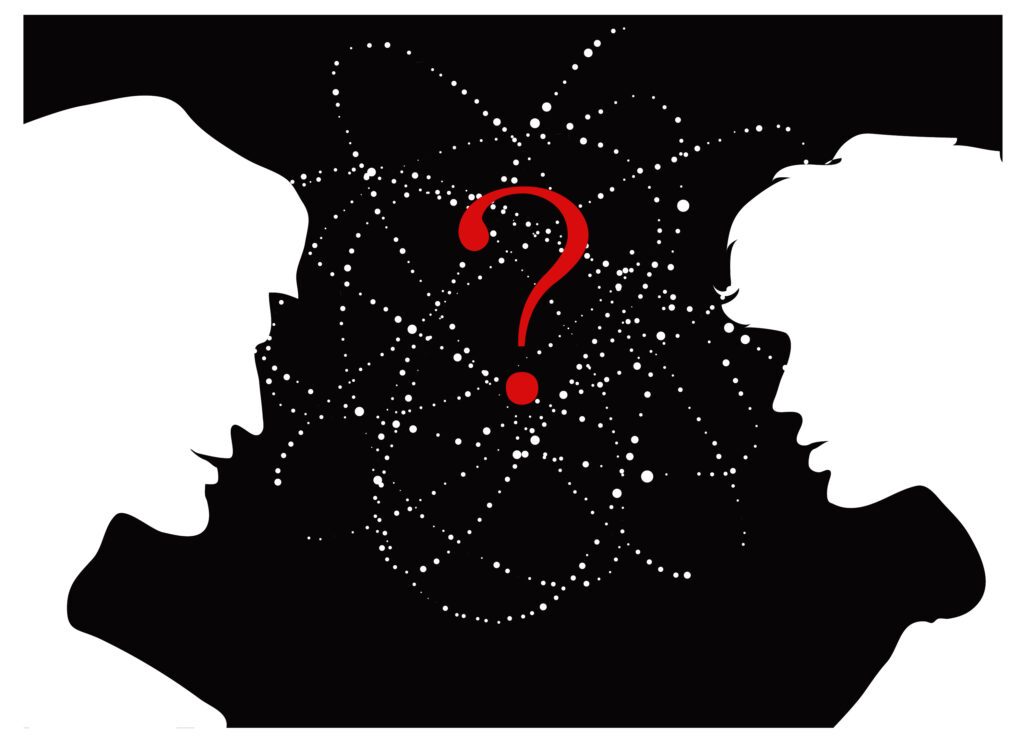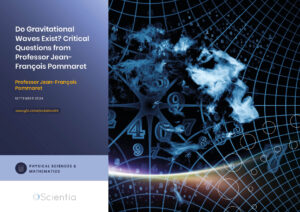Do Gravitational Waves Exist? Critical Questions from Professor Jean-François Pommaret
Through a detailed analysis of mathematical frameworks, Professor Jean-François Pommaret challenges the established scientific consensus on gravitational waves, proposing that certain mathematical interpretations could question their existence. This article delves into the professor’s examination of the founding principles of general relativity, offering an insightful, alternative perspective on the ongoing dialogue between mathematics and physics.
Challenging Established Frameworks
In the vanguard of theoretical physics and mathematics, Professor Jean-François Pommaret emerges as a figure of particular interest. Born in Paris in 1945 and culminating his career as an Emeritus Researcher at Ecole nationale des ponts et chaussées (now known as Ecole des Ponts ParisTech), Professor Pommaret’s journey spurred him to explore several topics at the intersection of mathematics and physics, including homological algebra, differential equations, and control theory. Professor Pommaret’s doctoral work laid the foundational stones for his study of partial differential equations, subsequently leading to significant contributions in differential algebra, differential Galois theory, and the application of mathematical principles to theoretical physics and mechanics.
Drawing from his deep engagement with differential algebra and the complex interplay between mathematics and physics, Professor Pommaret revisits the foundational aspects of general relativity, challenging the celebrated detection of gravitational waves and inviting a reevaluation of what many now consider established scientific truths.
Professor Pommaret is not new to the rigorous examination of established frameworks, and the innovation proposing new ones that address shortages or gaps in the former status quo. In his Partial Differential Control Theory book series spanning two volumes, he introduces an impressive amount of mathematical tools. He applies these tools to control systems, revisiting known results with a revolutionary perspective and linking different aspects and properties of the theory in ways that had not been noticed, or at least published, before. One reviewer of the ZbMATH described the book as ‘one of the most remarkable ones in the history of control theory’.
In 1995, Professor Pommaret provided a negative answer to the 1,000-dollar challenge proposed 25 years earlier by the American theoretical physicist John Archibald Wheeler concerning the possibility of parametrising Einstein equations in gravitation like Maxwell equations in electromagnetism, Cauchy equations in elasticity or more generally, to decide about the controllability of a control system in control theory.
Gravitational Waves
The scientific endeavour to detect gravitational waves represents a journey spanning over a century, beginning with Albert Einstein’s 1916 prediction based on his theory of General Relativity. This theoretical milestone posited that cataclysmic events in the cosmos, such as the collision of black holes, could produce ripples in the fabric of spacetime, propagating at the speed of light. Despite the theoretical acceptance, the practical demonstration of gravitational waves eluded scientists until 2015, when LIGO (the Laser Interferometer Gravitational-Wave Observatory) reported the first observation, a discovery that fundamentally affirmed Einstein’s theoretical framework and opened new avenues for understanding the Universe.
In contrast, Professor Pommaret expresses deep scepticism regarding the existence of gravitational waves, rooted in his critical examination of the mathematical structures underlying general relativity. His arguments hinge on sophisticated interpretations of differential algebra and the principles of homological algebra, suggesting that the mathematical underpinnings of gravitational waves, as currently understood, may not withstand rigorous scrutiny. His work invites a reevaluation of established notions, challenging the scientific community to reconsider the foundational assumptions that have led to the acceptance of gravitational waves.
In particular, Professor Pommaret points to the so-called Einstein operator, which is central to the mathematical framework of gravitational waves and was first discovered by the Italian mathematician Eugenio Beltrami in 1892 in relation to three-dimensional elasticity – almost 25 years before Einstein. The comparison, which is fully described in the papers of Professor Pommaret, needs no further comment here. It suffices to note here that both scientists had confused stress functions with the deformation of the metric on one side and the Cauchy stress operator with the well-known ‘divergence’ operator (induced from the Bianchi operator) on the other side.

Algebraic Nuances
Einstein’s equations, central to the theory of General Relativity, articulate how matter and energy dictate spacetime’s curvature, fundamentally altering our understanding of gravity and the Universe’s structure. Professor Pommaret’s critique, grounded in differential algebra and homological algebra, suggests overlooked mathematical complexities within these equations. Professor Pommaret proposes that the conventional interpretation fails to account for the algebraic structures and differential operators fully, whenever modern concepts such as ‘extension modules’ in homological algebra are taken into account.
An innovative approach in the parametrisation of the Cauchy stress operator leads, in Professor Pommaret’s opinion, to the discovery of confusion between operators used in theoretical physics, which is found to be quite ubiquitous across theories. As a result, the mathematical foundations that predict the existence of gravitational waves are shaken – questioning their very existence.
The new fundamental diagram of operators proposed in the professor’s work titled ‘From Control Theory to Gravitational Waves’ suggests, instead, that the phenomena observed in both electromagnetism and gravitation should only depend on the structure of the conformal group of transformations of spacetime preserving the Minkowski metric up to a function factor. Such a result had been first conjectured by Hermann Weyl in 1918 in his famous book, ‘Space, Time, Matter’.
What’s Next?
Once upon a time – and not very long ago, at the end of the 19th century – everyone believed that Newton’s equations were the ultimate descriptors of motion and force, painting a clear picture of a universe ticking along like a grand clockwork. Yet, as history unfurled, Maxwell’s equations describing electromagnetism cast a long shadow of doubt, revealing that light didn’t behave as Newton’s framework would have predicted.
The Michelson and Morley experiment (1887) confirmed that light did not seem to obey the equations, opening the stage to a line of research that eventually culminated in Einstein’s special relativity theory. Fast forward to today, Professor Pommaret, armed with differential and homological algebra, challenges the bedrock of Einstein’s legacy and its mathematical foundation. Just as the ether was dethroned by relativity, Professor Pommaret’s insights hint at a universe more complex and wonderfully intricate than even Einstein’s equations suggest, perhaps opening the stage to new experiments that may deepen the understanding of our Universe.
The potential nonexistence of gravitational waves would send shockwaves through the fabric of physics, challenging the cornerstone of our understanding of the Universe as shaped by General Relativity. Historically, the scientific community has shown resistance to paradigm-shifting discoveries, often clinging to established doctrines until overwhelming evidence triggers the need for change. This resistance underscores the importance of maintaining an open-minded approach to scientific inquiry.
True progress demands the courage to question even the most cherished beliefs, embracing the unknown with curiosity and rigour. In that regard, Professor Pommaret’s work is a reminder that the quest for knowledge is unending, suggesting that the equations governing gravitational waves and spacetime curvature might also be ripe for a revolutionary reinterpretation, much like the ether was for relativity.
As with everything in science, only time will tell (!). Certainly, the questions posed by Professor Pommaret demand answers from the scientific community regarding both the merit of the foundations of gravitational waves and the experiments claiming to have confirmed those theories.
SHARE
DOWNLOAD E-BOOK
REFERENCE
https://doi.org/10.33548/SCIENTIA1055
MEET THE RESEARCHER

Professor Jean-François Pommaret
CERMICS
Ecole des Ponts ParisTech
France
Having obtained his PhD in 1978 at Ecole Nationale des Ponts et Chaussées under the supervision of French mathematician and physicist André Lichnerowicz, Professor Jean-François Pommaret continued his dedicated research and teaching for several decades. In 2006, Professor Pommaret retired with the position of Emeritus Researcher at Ecole des Ponts ParisTech. He continued his academic work in mathematics and physics while publishing his critical challenges to the dominant mode of thinking in his field. He is the author of more than 200 papers, seven books published by international editors and four book chapters. Professor Pommaret has shared his findings during a series of annual one-week intensive European courses (1990–1995: ERCIM with INRIA, 1997–2004: CTS with SUPELEC, AACA 2009 in Linz, Austria). His work opens our eyes to alternative perspectives and asks us to question the very fundamentals of what we think we know about the world. His main aim is to prove that whenever mathematics and physics are in competition, the final winner is always mathematics, as disturbing as that outcome may sometimes be.
CONTACT
E: jean-francois.pommaret@wanadoo.fr
ORCID: 0000-0003-0907-2601
KEY COLLABORATORS
Alban Quadrat (alban.quadrat@inria.fr)
Serge Lazzarini (sel@cpt.univ-mrs.fr)
FURTHER READING
J-F Pommaret, A Quadrat, Algebraic analysis of linear multidimensional control systems, IMA Journal of Mathematical Control and Information, 1999, 16(3), 275–297. DOI:
J-F Pommaret, Partial Differential Control Theory, Springer, ISBN:978-0-7923-7037-6
J-F Pommaret, Algebraic Analysis of Control Systems Defined by Partial Differential Equations, Chapter 5 in Springer LNCIS 311, 2005, 155–223, DOI: 10.1007/11334774_5
J-F Pommaret, Spencer Operator and Applications: From Continuum Mechanics to Mathematical Physics, InTech, 2012, 1–32. DOI: 10.5772/35607
J-F Pommaret, Deformation Theory of Algebraic and Geometric Structures, 2016, Lambert Academic Publisher, Saarbruken.
J-F Pommaret, Gravitational Waves and Parametrizations of Linear Differential Operators, Intechopen, 2024, 3–39, DOI: 10.5772/intechopen.1000851
J-F Pommaret, From Control Theory to Gravitational Waves, Advances in Pure Mathematics, 2024, 14, 49–100. DOI: 10.4236/apm.2024.142004
J-F Pommaret, Gravitational Waves and the Foundations of Riemannian Geometry, Advances in Mathematical Research, Volume 35, 2024, 95–161, Nova Science Publisher, ISBN:979-8-89113-607-6
REPUBLISH OUR ARTICLES
We encourage all formats of sharing and republishing of our articles. Whether you want to host on your website, publication or blog, we welcome this. Find out more
Creative Commons Licence (CC BY 4.0)
This work is licensed under a Creative Commons Attribution 4.0 International License. 
What does this mean?
Share: You can copy and redistribute the material in any medium or format
Adapt: You can change, and build upon the material for any purpose, even commercially.
Credit: You must give appropriate credit, provide a link to the license, and indicate if changes were made.
SUBSCRIBE NOW
Follow Us
MORE ARTICLES YOU MAY LIKE
Dr Michael Parker – Dr Christopher Jeynes | Explaining Fundamental Reality (using the changing entropy)
Dr Michael Parker (Lexden Technologies) and Dr Christopher Jeynes (independent scholar) apply basic principles of thermodynamics to the topical issue of beta-decay bringing us an entirely new understanding of Time and Reality.
Dr Barry Ganapol | Discretising Radiation and the Fokker-Planck Equation
Dr Barry Ganapol from the University of Arizona and Dr Ó López Pouso from the University of Santiago de Compostela are working to address the fundamental challenge of solving the Fokker-Planck Equation as applied to radiation transport theory. They introduce a novel application of the Response Matrix/Discrete Ordinates method, achieving six-figure precision in modelling how radiation (specifically electrons and photons) scatters through small angles. This breakthrough could have significant implications for fields ranging from medical imaging to environmental science, enhancing our ability to predict and control radiation’s interaction with matter.
Dr Olalla Castro-Alvaredo | Measuring Entanglement: Symmetry-Resolved Entropy
Dr Olalla Castro-Alvaredo of the City University of London (UK) and her collaborators are advancing our understanding of an important phenomenon of quantum mechanical systems known as entanglement and, especially, its mathematical measures. Symmetry-resolved entanglement entropy is one such measure. Their study focuses on special quantum states which are excited with respect to a ground state. The research shows how the entanglement amongst quantum particles can be measured and assesses the contribution to the entanglement of quasiparticle excitations, particularly in the presence of additional symmetries.
Dr Tsun-Kong Sham – Dr Jiatang Chen – Dr Zou Finfrock – Dr Zhiqiang Wang | X-Rays Shine Light on Fuel Cell Catalysts
Understanding the electronic behaviour of fuel cell catalysts can be difficult using standard experimental techniques, although this knowledge is critical to their fine-tuning and optimisation. Dr Jiatang Chen at the University of Western Ontario works with colleagues to use the cutting-edge valence-to-core X-ray emission spectroscopy method to determine the precise electronic effects of altering the amounts of platinum and nickel in platinum-nickel catalysts used in fuel cells. Their research demonstrates the potential application of this technique to analysing battery materials, catalysts, and even cancer drug molecules.





